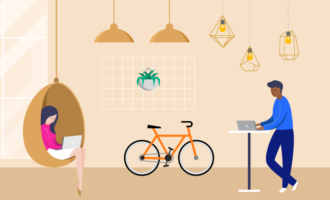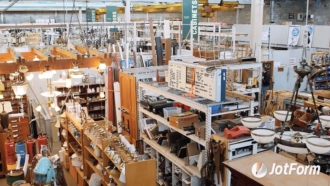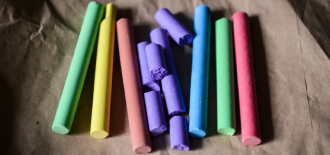Going paperless is a process. You can’t expect to immediately throw out stacks of papers, sell your old file cabinets at a garage sale, and never have to deal with paper again.
Although it doesn’t happen overnight, ridding your home of paper clutter isn’t complicated. Below are some simple steps to help you get started.
9 steps to create a paperless home
- Sign up for electronic bills
- Invest in cloud storage
- Set up a system to quickly find important documents
- Save important documents in at least two places
- Set up automatic backups
- Buy a paper shredder
- Use a to-do list app instead of sticky notes
- Use online signup forms instead of paper forms
- Switch from paper books to reading on a Kindle
Sign up for electronic bills
Invest in cloud storage
Set up a system to quickly find important documents
Save important documents in at least two places
Set up automatic backups
Buy a paper shredder
Use a to-do list app instead of sticky notes
Use online signup forms instead of paper forms
Switch from paper books to reading on a Kindle
First, make the switch from paper bills to e-bills. It’s faster, better for the environment, and cuts down on paper. Another perk is automatic billing. This will save you tons of time each year.
Another simple step is to move your documents into the cloud. There are a host of cloud storage options, including Google Drive, Dropbox, and Box. If you’re nervous about cloud storage, don’t be! But if it eases your mind, you can take photos of your paper documents before storing them in the cloud.
Pro-Tip
Go paperless by collecting data, e-signatures, and file uploads online with Jotform — for free! You can even sync submissions to cloud storage platforms like Google Drive, Dropbox, and Box to back up your data automatically.
There’s nothing worse than spending 15 minutes frantically searching for a document you need. Avoid this by developing a system for storing, searching, and archiving information.
There are tons of different ways to do this, and everyone has their own system. The only thing that matters is that your system and processes are consistent, easy to search, and have some sort of categorization or tagging functionality.
Bad things happen. Your favorite software can disappear. Malware and computer viruses can corrupt files. You can lose account access.
For important documents, mitigate your risks by saving them in at least two places. You may also want to save them on an external hard drive.
Pro Tip
For legal documents, such as birth certificates, deeds, titles, etc., it’s smart to save a physical copy in a fire-safe safety deposit box.
Schedule regular backups of your computer. That way, if your computer crashes or gets lost or stolen, you still have all of your important files securely stored and accessible from the cloud.
There are tools, like Backblaze, that do this on autopilot in the background.
When you’re throwing away papers that contain sensitive information, like account numbers, social security numbers, or credit card details, you need to shred those documents. Identity theft is a real and growing problem. Shredding sensitive documents is one way to deter thieves.
Pro Tip
Confetti shredders work best since it’s nearly impossible for someone to put the document back together.
For day-to-day tasks, replace paper sticky notes with electronic to-do or project management apps. There’s no shortage of options to choose from. Some of our favorites are Asana, Trello, ToDoist, and the notes app that comes standard on your smartphone.
Whether you’re collecting lunch orders, getting t-shirt sizes for your kid’s soccer team, or just want to read daily updates about Fido from your pet sitter, online signup forms are easier to keep track of and more efficient.
Pro Tip
If you use a tool like Jotform Mobile Forms, you can collect all of the data you need on the go, right on your smartphone. There’s no need for a pen, paper, or Wi-Fi.
Books, magazines, and newspapers take up a lot of space, and they don’t travel well. Read on a Kindle or other electronic device or listen on Audible. It not only saves a ton of space, but it’s easier to handle on the go.
Think you’re ready?
Take the plunge and go paperless. But remember: It’s a process.
Paperwork and files are still going to pile up for a while. Work through your clutter in batches. This can be as simple as setting aside an hour each month to go through your stacks. Create three bundles — garbage, scan and destroy, and keep.
After a few months, you should drastically reduce the amount of paper in your home.




















Send Comment: